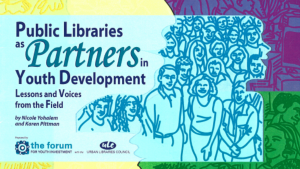
It is one thing for the poet Alexander Pope to suggest that “hope springs eternal in the human breast.” It is another for the leading pollsters to prove it.
At a recent Gallup event releasing two polls on education, Dr. Shane Lopez, Gallup senior scientist and creator of the Gallup Student Poll, reported that students participating in the free and reduced lunch program or reporting low family income score the same as more affluent students on Gallup’s Hope, Engagement or Well-being Indices, which are measures of student readiness for the future.
How is that possible? It flies in the face of common sense. Did Gallup intentionally design indices that are insensitive to the differentiating realities of class? Yes, in fact, it did.
The rationale behind the poll can be found on the poll’s website (www.gallupstudentpoll.com). In short it is: “Through a thorough review of … research, Gallup researchers chose three variables … that met the following criteria: 1) they can be reliably measured, 2) they have a meaningful relationship with or impact on educational outcomes, 3) they are malleable and can be enhanced through deliberate action, 4) they are not measured directly by another large-scale survey or testing program, and 5) they are not associated with income status.
Why would they do this? I won’t try to speak for Gallup. What I can share are the reasons I am simultaneously petrified and excited that they did.
Why am I petrified? Because without looking beyond the summary data, it is too easy to either dismiss the findings as nonsensical or to suggest that disadvantaged children and youth are irrational.
Why am I excited? Because when we look at the individual items in these three indices, we find a rich story that demands discussion and gives communities and schools an opportunity to start discussions about serious gaps in students’ “readiness for the future” in which the variation is not immediately linked to family income.
Let’s just focus on hope. The Hope Index is derived from a weighted average of four items. Overall, more than half (53 percent) of the fifth- through 12th-grade students surveyed are hopeful. But look at the story behind this single number:
Virtually all (92 percent) strongly believe they will graduate from high school.
Only two-thirds strongly believe they can come up with many ways to get good grades.
Nearly half strongly believe they will find a good job after graduation.
One-third strongly believe they can find ways around any problem that might arise in life.
Two of these items tap straight into the American dream. The dream of a “good job” has been seriously eroded by globalization, the demise of the manufacturing industry and the weak economy. But the education dream is holding steady, seemingly oblivious to data.
Two of these items, however, require a concrete assessment of specific skills. These are reality-based measures of self-efficacy. There is no room for naiveté or bravado in students’ responses.
So why are there no differences by family income in the three measures with variance? Here are my guesses. Definitions of “good” probably change with income, keeping estimates constant. Students from more affluent families may have more ways to get good grades, but students from low-income families may have more experience solving real life problems, so the differences may wash out.
Gallup can, and I assume will at some point, provide further analyses. But we don’t have to wait for that. Community change occurs when broad segments of the community start to ask questions they feel empowered to answer. This data, presented locally, can spark questions that can drive change.
As logical as getting broad community ownership for school reform seems, there are two challenges. First, reform is what experts do. Second, neither students nor their parents know their schools are failing them until it’s too late. According to the Phi Delta Kappa/Gallup poll on public attitudes toward public schools released at the same event, 92 percent of parents strongly agree that their oldest child will graduate from high school. Seventy-seven percent gave their children’s schools an A or a B.
On the other hand, parents don’t believe strongly that their children will find good jobs after graduation (29 percent) or that school provides their children with an opportunity to do what they do best every day (27 percent). What happens when strategy discussions start here rather than with test score data?
Hope, engagement, and well-being are measurable, malleable, and matter to young people’s success. Equally important, they matter to communities and they matter to youth workers. We struggle for language to describe our impact – developmental assets, soft skills, life skills, 21st-century skills. The Gallup Poll doesn’t measure skills and assets; Gallup’s goal is to give the country an easy, annual way to have a conversation about those skills and assets with data from young people in rooms with young people.
Let’s help them succeed.
The poll is free to public schools. It takes 8 ½ minutes to administer. Ask your superintendent to host the poll so that you can have data to help the community bring young people’s voices into the discussions about how to increase their success.



No comment yet, add your voice below!